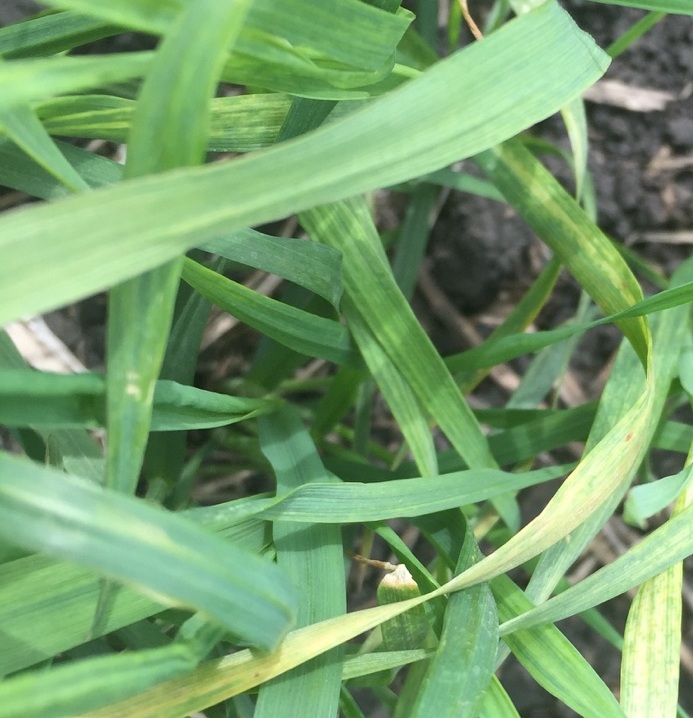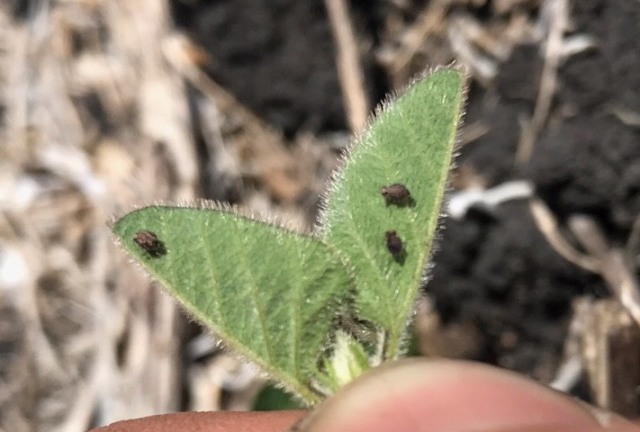Manitoba Insect & Disease Update
Issue 3: June 7, 2017

There continues to be some foliar insecticide applications for flea beetles.
A reminder that once canola gets into the 3 to 4 leaf stage it can usually compensate well for flea beetle feeding.
Flea beetles will feed more aggressively on hot, calm days.
If it has been greater than 3 weeks since seeding, and your canola is still not at the 3 to 4 leaf stage, do scout canola fields for flea beetle feeding. The nominal threshold suggested is if greater than about 25% of the plant tissue is damaged, and flea beetles are still actively feeding, and the crop is not yet at the 3 to 4 leaf stage, then there is reasonable odds an insecticide application would be economical.
Remember that if using a pyrethroid insecticide for flea beetle control that this group of chemistry has temperature restriction - check the labels or the Guide to Crop Protection.
Cutworms
There continues to be some localized insecticide applications for cutworms.
Dingy cutworms will often remove plant tissue, but do less clipping than some other species. They feed at night, and are hidden during the day. So if you are seeing defoliation but no insect activity, dig around affected plants to see if dingy cutworms are the cause.
Dingy cutworms are turning to pupae, a non-feeding stage, in some fields.
Grasshoppers
There are 3 main grasshopper species in Manitoba that potentially can be pests, and many others that never get to pest levels.
Hatch has started for the potential pest species, but numbers are currently low.
Any grasshopper that is large this time of year is not a potential pest species. Those large grasshoppers you may see while hiking this time of year, that click as they fly away, are not potential pest species.
A good general guideline is that about 10 days after the lilacs are flowering, the egg hatch for our pest species of grasshoppers has begun. In a study in Montana, a comparison was made between the phenological phase dates of purple common lilac (Syringa vulgaris L.) and Zabeli honeysuckle, and 6 common species of rangeland grasshopper. Results indicated that spring hatch (75% of first instar) occurred about 10 days after the begin bloom phase of purple common lilac. Peak occurrence of grasshoppers for instar 2 coincided, on average, with the end bloom phase of Zabeli honeysuckle, whereas peak instar 3 occurred about 10 days later. About 75% adult stage occurred about 14 days after red berries first appeared on Zabeli honeysuckle (Journal of Range Management. 1991: 583-587). So when the grasshoppers are smaller and harder to scout and stage, some botanical observations may help.
| Location | Count |
|---|---|
| Minitonas | 19 |
| Ste. Agathe | 17 |
| Lockport | 16 |
| Ste. Elizabeth | 15 |
| Winkler | 14 |
| Altona | 13 |

Answer: These are called springtails. This particular species belongs to a family of springtails known as globular springtails (Sminthuridae). There is a second family of springtails called elongate-bodied springtails that are similar but more elongate.
Springtails have a valuable role as decomposers, feeding on dead plant material and are not usually a pest. Some species may do light feed on seedlings, but are not likely to be economical.
People sometimes confuse springtails with aphids; but springtails don’t have tailpipes (cornicles) like aphids. And although they are small and jump, they are not flea beetles.
